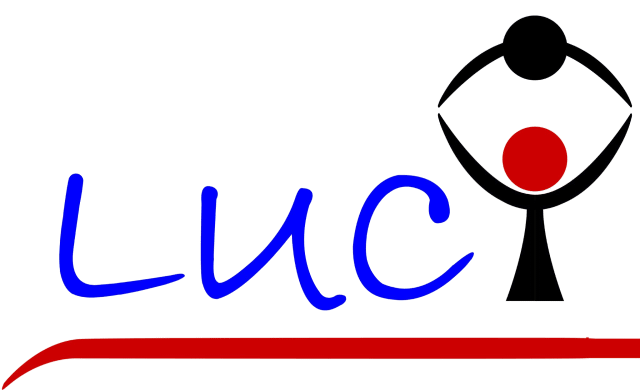School & College Programme of Let Us Care for You[LUCY] member organization of Federation of Indian Blood Donors Organisations [FIBDO] on Blood & Thallasaemia
A model “Blood donor enrollment programme” & “Thallasaemia intervention & detection Program” to ensure a blood transfusion service for the country entirely depending on non remunerative voluntary blood donation must have two concomitant strategies: (i) short term strategies to meet the need of today as far as possible and (ii) long term strategies to meet the need of tomorrow or day after tomorrow. There are programme for donors of tomorrow in Australia, Uk, Portugal, France,Nepal,Maldives,Mauritius, USA, Zimbabwe and India. Each one is culture specific of the country.
This is, in fact, a class room teaching by the trained volunteers of Let Us Care for You[LUCY] member organization of Federation of Indian Blood Donors Organisations [FIBDO].The programme is in the form of extension lecture followed by a detection camp for thallasaemia and blood grouping.
Action Plan
Time Frame: January – December
No. of Awareness Programs – 120
No. of Students in awareness programme – 24000
Talk Plan
I. Title of the Address: Blood,Blood Donation & Thallasaemia
II. Participants:
Students of age group between 13 and 20 years who generally study “Human Blood” in their Life Science/Biology curriculum in school.
III. object
To inspire students to donate blood on attaining the age of 18.
To explain the need of knowing one’s own blood group.
To impress upon the students the danger of transfusing blood collected from blood sellers and commercialisation of human blood.
To motivate students to undergo thallasaemia detection.
IV. Teaching Aids
Projector, white board,marker, poster, models, blood bag, leaflet, folder and booklet.
V. Duration
60 minutes including time for question and answer.
VI. Method
Skit or visual presentation on blood donation & thallasaemia, talk, board work, demonstration followed by interactive session, instant quiz & thalassaemia detection.
VII. Perception to be imparted in a single lecture/ talk/interaction
Perception 1 – Importance and significance of the topic in the present society .
Perception 2 -Importance of blood transfusion in modern medical science.
Perception 3 – Who needs blood and when (Indications of blood transfusion).
Perception 4 – History of blood transfusion and blood banking.
Perception 5 – Demand Supply position of blood in the state.
Perception 6 -Reasons of shortage of blood for transfusion in the country (i.e. reasons for not donating blood).
Perception 7- Blood volume, volume of donation and interval for
recuperation – no special diet, rest or medicine necessary . Normal life of
blood cells and shelf life of blood. Interval between two consecutive blood donations.
Perception 8 – Who can donate blood and donor screening.
Perception 9 – What do voluntary blood donors get ?
Perception 1 0 – Blood group and importance of knowing one’s own blood group.
Perception 11 – Evils of commercialisation of human blood. Concept of safe
blood transfusion in the days of blood communicable diseases.
Perception 12 – Why every eligible person should donate blood ?
Perception 13 – School students’ role is blood donation & thalassaemia.
Perception 14 – Conclusion-one can donate blood on attaining the age of 18 years.
Perception 15 – What is Thalassaemia? How to eradicate this disease?
(viii) Evaluation: Question and Answer and Quiz Competition.
(ix) Final Result : Students are motivated to donate blood on attaining the age of 18 years & take the thallasaemia detection test and undergo blood grouping.
Methodology
The classroom to be decorated with attractive colourful posters with visuals and message related to voluntary blood donation & thallasaemia. The selected stories from the epics, literature, history and everyday life are to be used as the vehicle of oral communication of message and science along with simile, metaphor, allegory and parable to keep a mark on the young mind to act later, even after five years.
Takeway
Attractive printed materials communicating messages of blood donation & thalassaemia with visuals like T-shirts,Caps,button badges, lapel pins, class routine (timetable) ,pen,pencil,eraser,pencil box,folder , booklet , card,sun guard etc., to be presented to every student at the end of the class to carry home and retain as memento.
Evaluation
After effective interactions students would normally be able to answer the following questions by spontaneous raise of hands.
• Would you donate blood on attaining the age of 18 years?
• Can you calculate your own blood volume? How much surplus blood you have in your body? How much blood you can part with without causing any harm to yourself?
• Will you buy blood from commercial blood sellers?
• Would you test for thallasaemia and extend your hand to make this world thallasaemia free?
Teachers’ Training
The trainers/instructors/teachers of this programme are volunteers coming from different walks of life to extend their labour of love for the cause. They are trained/groomed/oriented in the oral communication and art of teaching through a series of workshops and other teachers training programme.
Follow-up by Short Term Programme
** Essay Writing,elocution,sit-n-draw,poster preparation competitions intra-school basis.
** Inter-school quiz contests to be organised on Blood and Blood Donation & thallasaemia as a follow up action.
** Blood donation Drive in Colleges
** Thalassaemia Detection in Colleges
** Blood Group Test in colleges
**Wherever teachers of the school or head of the institution and students will be interested
(a)to organise a blood collection drive as a part of their community service or social service programme, a blood donation camp may be organised in the school premises on a subsequent convenient date where school students of tender age become organisers(each one bring one), motivators and recruiters with teachers, guardians and ex-students as blood donors.
(b)Thallasaemia detection camp will be arranged.

 Account Holder : Let Us Care for You
Account Holder : Let Us Care for You